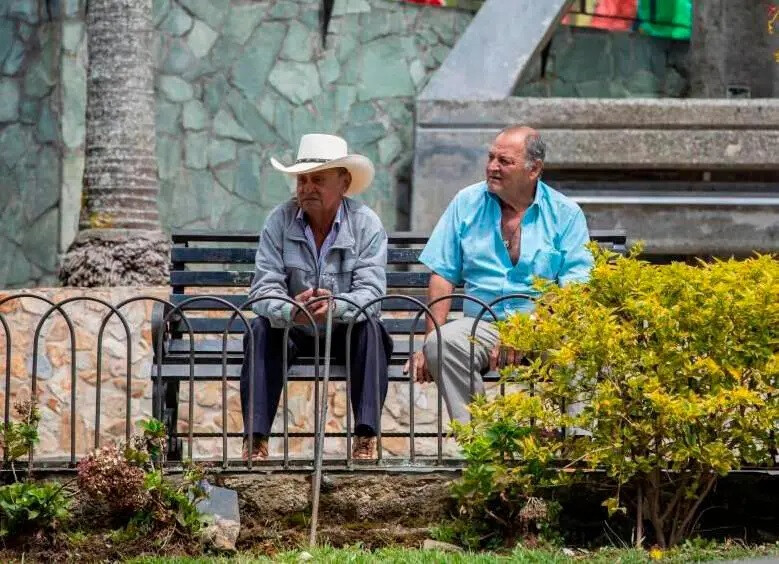
The Petro government's goal is to reach 7.5 million by the end of the mandate, but tourism associations, such as Anato, which represents travel agencies, insist that tourism growth depends not only on numbers, but also on promotion, security, and infrastructure development.
Based on official figures, Anato calculated that December 2024 ended with 6,649 weekly frequencies, which translates to 23% more compared to the same month in 2023.
With this, six airlines covered 239 routes to 59 cities in Colombia throughout the year, while in December 2023, 5 airlines operated 204 routes to 51 cities.
These figures are due to promotion investments by Procolombia and also because 1,548 direct international air frequencies were reached, with a 12% increase in 2024.
With this background, Anato stated, at the 44th Tourist Showcase held in Corferias (Bogotá), that tourism is close to generating the same amount of foreign exchange as coal and coffee combined, according to Banco de la República's accounts for 2024.
Why did tourism surpass coal and coffee in Colombia?
Coffee recorded export revenues of around 3.393 billion dollars, according to the National Federation of Coffee Growers' accounts; while coal revenues were 7.106 billion dollars, according to Dane.
The two totaled 10.499 billion, similar to the foreign exchange income from tourism which, according to Anato, would be around 10 billion dollars by the end of 2024.
"From Anato we estimate that in 2024 tourism would have generated around 10 billion dollars in foreign exchange and with this we would not only surpass coal and coffee, but we would be close to generating the same amount of foreign exchange as these two traditional products of the Colombian economy combined," detailed the president of Anato, Paula Cortés Calle.
The union leader highlighted the growth of tourism in Colombia and reiterated that the sector is already generating more foreign exchange than coffee and coal combined.
According to projections, tourism would be exceeding 10.5 billion dollars in revenue by 2025, reaching the 10.5 billion dollars that these two traditional sectors of the Colombian economy currently total.
That is, the sector contributed more than $40 billion pesos to the national economy, becoming the second largest generator of foreign exchange from exports, only behind oil and above traditional products such as coffee and coal.
This dynamism had a direct impact on GDP, which closed the year with a growth of 1.7%, more than double that recorded in 2023.
"Tourism is consolidating as the second largest generator of foreign exchange in the country, which demonstrates its potential and the importance of continuing to promote it," said Cortés Calle.
These figures had already been estimated by Banco de Bogotá in a study last June 2024, when it stated that tourism would become the second or third generator of foreign exchange in the country by the end of 2024.
"The recovery of tourism in Colombia has been more forceful than that observed in the world after the pandemic shock, with the flow of dollars growing even more than the number of tourists," the economic team specified in the report.
With the arrival of a greater number of tourists this year, it would imply a flow of dollars between 9 billion and 10 billion dollars, "with which the sector would surpass coal."
Therefore, today, among Latin American countries, Colombia is rated the third country that receives the most money from tourism, after Mexico and the Dominican Republic; however, it is worth noting that Colombia's growth rate in foreign exchange inflows is higher than that of the aforementioned countries. Worldwide, Colombia ranks 43rd.
According to Banco de la República, an average growth in spending per trip of 7% has also been reported, going from 1,247 in 2023 to 1,338 in 2024.
"We know that this year would become a record year in foreign exchange inflows, but we must also continue working on preparing destinations to make them and entrepreneurs more competitive in offering unique experiences in our territory," said the union leader.
What does the Petro government say about tourism figures?
The Minister of Industry, Commerce and Tourism, Luis Carlos Reyes, confirmed that tourism in Colombia is already generating more foreign exchange than coal and continues to rise.
This is because, according to the official, tourism is not only sun and beach, but also events and businesses.
He cited as an example the COP16, which will attract visitors with high economic impact, concerts by renowned artists and other major events hosted by the country. According to him, applying strategies similar to other countries with comparable attractions could lead Colombia to receive up to 20 million tourists in the future.
The minister emphasized that this growth is not only the job of the government, but of the entire country. "It is a State effort, which must transcend governments. If we continue on this path and focus well on promotion, we could exceed 10 billion dollars in annual revenue and continue growing in 2025."
Reyes is optimistic about the future of the sector and believes that thinking about 20 million tourists is completely viable in the long term.
He compared Colombia's situation with that of Peru, which receives fewer visitors despite its archaeological wealth, and with Middle Eastern countries that have multiplied their tourism with massive investments.
To boost this strategy, the government will allocate 25 million dollars (about $100 billion pesos) to international promotion.
The minister emphasized that achieving these goals is not only the task of the current government, but a national project that requires long-term commitment. "Pessimism leads nowhere," he concluded.
[Copyright (c) Global Economic Times. All Rights Reserved.]




























